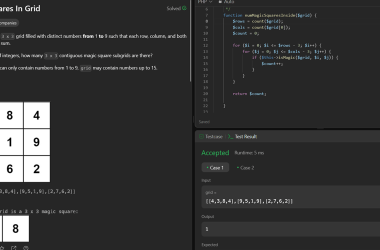I was learning Next.js and decided to build a fullstack application.
Now, let me tell you — my previous fullstack project?
An absolute nightmare.
It took me 45+ days of constant struggle. That experience convinced me:
“Maybe UI isn’t for me.”
And honestly?
The worst part of building fullstack apps, for me, is the UI.
Not because I can’t write React or CSS — I can.
But the process of making things pixel perfect, of tweaking paddings and colors for hours… it’s exhausting.
So I did what felt right:
I avoided frontend and dove deep into backend.
⚙️ I Went All-in on Backend
I learned how to use Postman properly, wrote two microservices with 5+ internal services each, and loved every minute of it.
The backend gave me control, clarity, and a direction.
No guessing. Just data, logic, flow.
But then I looked at job listings.
Node.js backend dev?
Great. Now prove you’re fullstack too.
Everywhere I looked — they wanted fullstack devs.
Not just great backend folks — but frontend fluency too.
So I knew I had to face the thing I avoided: UI.
😵💫 My Relationship With UI Was… Not Good
I’m the kind of person who stares at a button and changes its color ten times.
I get stuck not because I can’t build, but because I don’t know what to build or how it should look.
Eventually, that spirals into frustration and the thought:
“Maybe I’m not cut out for frontend.”
Which could still be true.
I don’t enjoy making beautiful UIs. I rely heavily on shadcn/ui, Tailwind, and copy-paste responsiveness like grid-cols-1 md:grid-cols-3 and hope it works 😅
💥 This Time, I Took a Different Approach
This time, I had something I didn’t have before:
Experience. Patience. And grit from debugging backend hell.
I knew how to manage frustration. I knew when to take breaks. And I knew how not to give up when stuck.
So I gave fullstack one more try — but I did it my way.
Here’s What Helped Me:
🧠 1. Wireframing First
I didn’t try to design the entire app.
I just wireframed one page.
Searched other websites, looked at their layout, drew boxes and lines. That’s it.
But it worked. I had direction. No more blank screen paralysis.
🧩 2. Break Components Into Small Bits
Next.js pushes you to think in client/server components.
And I had a teacher once say: “Keep most logic on the server.”
So I did just that.
All interactivity — filters, popovers, dynamic tables — went into client components.
I made small, focused client components. When I noticed reuse, I added props and cleaned them up.
This alone saved me tons of time.
⚡ 3. Used Server Actions Like Magic
This feature made me fall in love with Next.js again.
No more endless API routes.
Just write a server action, await it in a server component, and pass the data down.
Simple. Powerful. Clean.
Yes, there are limits — you can’t call them inside client components directly — but once you understand the rules, it’s game-changing.
💭 My Realization
Maybe I’m not a frontend dev.
Maybe you aren’t either.
But we don’t need to be pixel-perfect UI gods to build useful, beautiful, functional fullstack apps.
All we need:
- A decent wireframe
- Some UI inspiration
- A few solid tools (Tailwind, shadcn, maybe a little v0.dev)
- And a structured mindset that knows when to break, when to push
🎁 Final Thoughts
If you’ve ever told yourself:
“I’m bad at UI. I should just stick to backend.”
I feel you.
But trust me — you can build the frontend too.
And with time, structure, and a little patience, you might just unlock a new mental model — one that makes fullstack enjoyable again.
Cheers 🍻 and happy coding.
Thanks for sticking through this rant — hope it helped.
- 🔗 GitHub Repo
- 🔗Demo
- 🎥 Demo Video / Hand-drawn Wireframes
- 🧠 What this project solves: “A focused way to collect topic-based feedback via email invites.”







